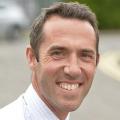Column: Arts aficionado Dorian Kelly introduces Weetman Pearson - another remarkable man in the history of Colchester
THE gates to Colchester’s magnificent Castle Park are so familiar we barely give them a glance these days. As is the war memorial.
However, if you stop and have a good look, you will see some curious things.
Above the gates, taking pride of place, is a diver complete with helmet, together with a Mexican. Further down, there is a raven.
These gates were donated to the people of Colchester in the 1920s by Weetman Dickinson Pearson, 1st Viscount Cowdray, MP GCVO, Baronet, engineer, industrialist, benefactor and Liberal politician.
He didn’t just donate the gates, by the way. He donated the whole Castle Park. And the war memorial. And Cowdray Crescent.
Oh, and the whole castle. He gave them to the people of Colchester and their heirs forever.
It is thanks to his gift of £10,000 that this area was cleared of the small buildings and sheds to create the view of the castle and the war memorial.
Under that, by the way, is a time capsule donated at the time by Messrs Shepherds the funeral directors, still with offices just round the corner.
It contains documents concerning the monument, describing for what reason it was erected, books of local interest, copies of newspapers and coins of the realm etc. All inside a handsome terracotta casket from Doulton & Co.
Being a funeral director, Shepherd knew how to hermetically seal and waterproof the casket with lead, which he skilfully stamped with a fine impression of the borough arms.
Cowdray was Liberal MP for Colchester at the time. Mind you, he was hardly ever in Colchester in the ten years of his tenure, to the extent he was known at the time as the “The MP for Mexico”.
Why Mexico? In 1889, at the age of 19, he went there and drained swamps, building the drainage system in Mexico City, as well as railways, power lines, waterworks and harbours and several railroad tunnels under the East River, New York City.
He had the contract to build the biggest railroad system in America, from the Atlantic to the Pacific, and during operations he accidentally discovered massive oil fields.
As a result of that, he kickstarted the whole Texan oil industry.
Back in England, his firm built the Blackwall Tunnel under the Thames, enlarged Dover harbour and, in 1926, completed a large dam on the Blue Nile.
In the course of all this, he made a massive amount of money. When I say massive, I mean Jeff Bezos-style money.
Were he around today to help out Colchester through his philanthropy, he would be able to have paid for Firstsite and the Mercury refurbishment ten times over.
He could also easily afford to commemorate the town’s former Roman chariot racing circus and the theatre at Gosbecks with a lifesize replica – and would still have millions left to spend on buying Harry Kane, Marcus Rashford and Dele Ali for Colchester United (with enough left over for Guardiola or Arsene Wenger to manage them).
During the First World War, he was made a member of the Privy Council and made Viscount Cowdray.
That same month, David Lloyd George requested that he become President of the Air Board.
Cowdray agreed, provided that he received no salary. He worked his socks off to improve the output of aircraft and produced a threefold increase.
Yet he was criticised after German bombing produced over 600 casualties on June 13 and resigned the following November.
So naturally, he went into politics.
His company, Pearsons, still exists. Up until recently, it owned Madam Tussauds and the Chessington World of Adventure
We don’t have a theme park but we do have the best park in Britain, as far as I’m concerned. And we have the castle. It’s ours. Here’s to you sir.
And the diver? Part of his crest was a reminder of his time spent in the sewers of Mexico.
The raven represents the emblem of the Portreeve of Colchester.







Comments: Our rules
We want our comments to be a lively and valuable part of our community - a place where readers can debate and engage with the most important local issues. The ability to comment on our stories is a privilege, not a right, however, and that privilege may be withdrawn if it is abused or misused.
Please report any comments that break our rules.
Read the rules hereLast Updated:
Report this comment Cancel